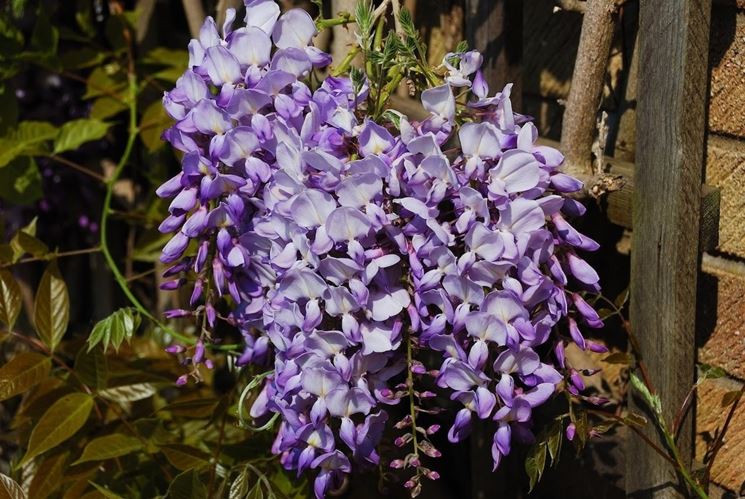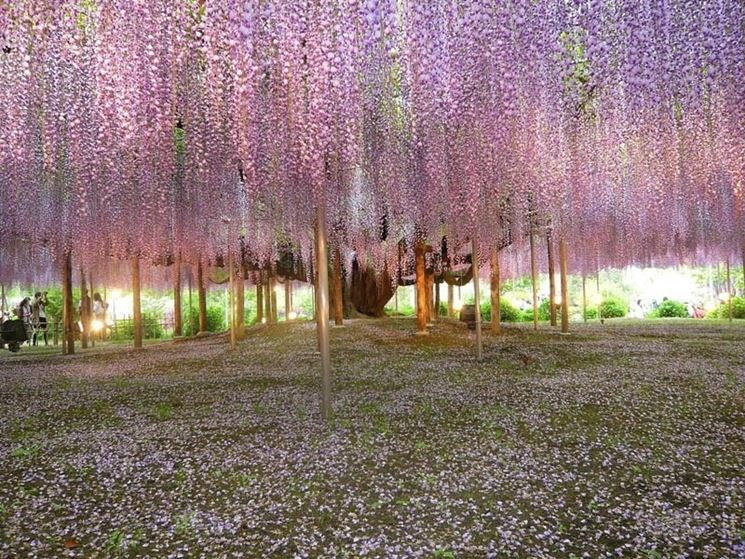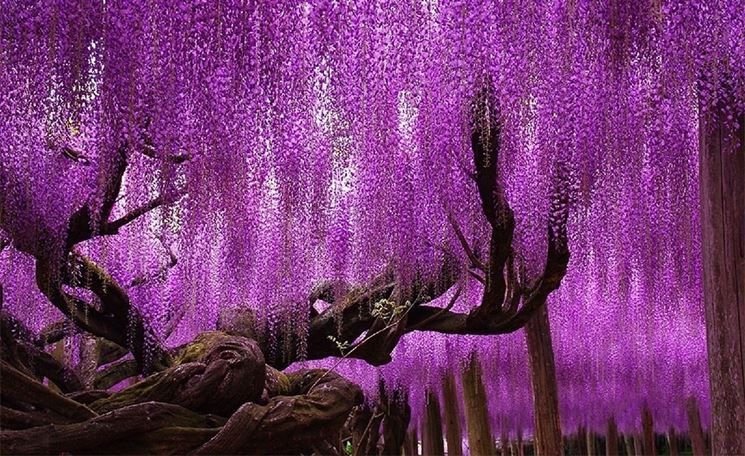Wisteria meaning

Origins and spread of wisteria

The meaning in the language of flowers

The language of flowers, or florigraphy, spread in Europe in the nineteenth century, to express emotions that could not be communicated in words. Today it is an almost completely forgotten language but some flowers are still considered symbols of certain emotions and feelings. In Victorian times the wisteria represented ardent, obsessive and passionate love, by analogy with the way it grows, quickly and in a spiral movement, around a support. This symbology then developed over time and today it is considered the flower of friendship precisely because, like the latter, it grows and develops by leaning on a support. Therefore, if given as a gift, wisteria is a sign of friendship that can symbolize, for example, a show of affection, a simple gesture of thanks or a request for apology.
The significance of wisteria in oriental cultures

In oriental cultures, from which it originates, the symbolism of wisteria is more complex and varied. The ancient art of Feng Shui considers wisteria flowers, due to their cluster shape, as the equivalent of bowing and the plant is taken as a symbol of honor and respect. For Shin Buddhism, wisteria is a symbol of humility and reflection. In Japanese culture it represents friendship: according to tradition, the Emperors brought small wisteria bonsai as a gift on their travels to demonstrate friendship, benevolence and willingness to dialogue. Another meaning of wisteria in oriental philosophies is that of the development of consciousness: the method of winding the plant in a spiral would in fact represent the expansion of human consciousness, from the interior to a higher awareness.
Wisteria meaning: Some curiosities about symbology

Wisteria is mentioned among the seven plant wonders of the world and also represents immortality and longevity, being able to exceed the century of life. But, like many other climbing plants, it can spread invasively and in some cases destructive: in Sierra Madre, California, there is a wisteria plant large enough to be named the most flowered plant in the world by the Guinness Book of Records. In Japan, wisteria was celebrated in festivals organized by aristocrats at the end of the Heian period and often used as a motif on the coats of arms of Japanese families. For Jodo Shinshu Buddhism the wisteria has an important symbolic meaning and for this reason it is inserted in its temples: the hanging clusters of flowers and the branches of the vine seem to bow their heads to Buddha as a sign of respect humility and religious reflection. In the Japanese ballet «Fuji Musume» of the Kabuki theater the wisteria is personified by a girl who represents its essence: her love is unrequited and the wisteria becomes the symbol of lost love which, however, like the broken heart that overcomes the suffering, can endure and thrive even in difficult conditions.




